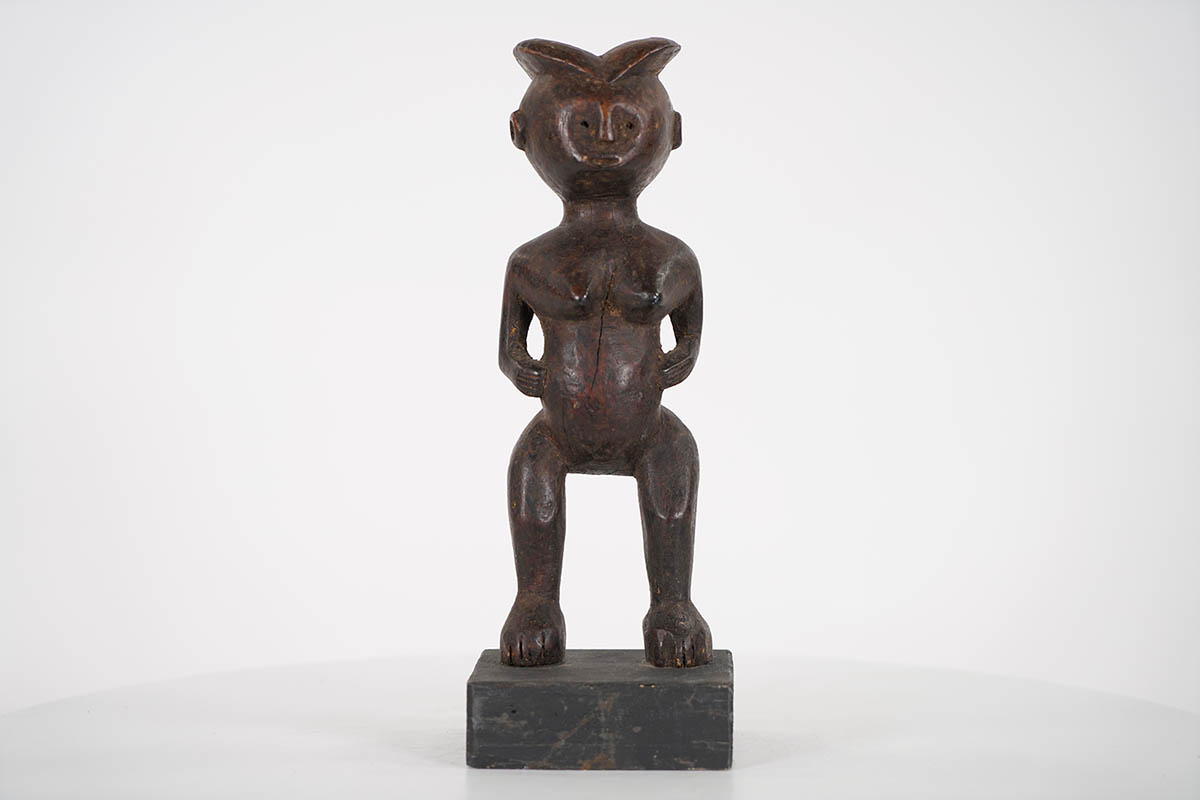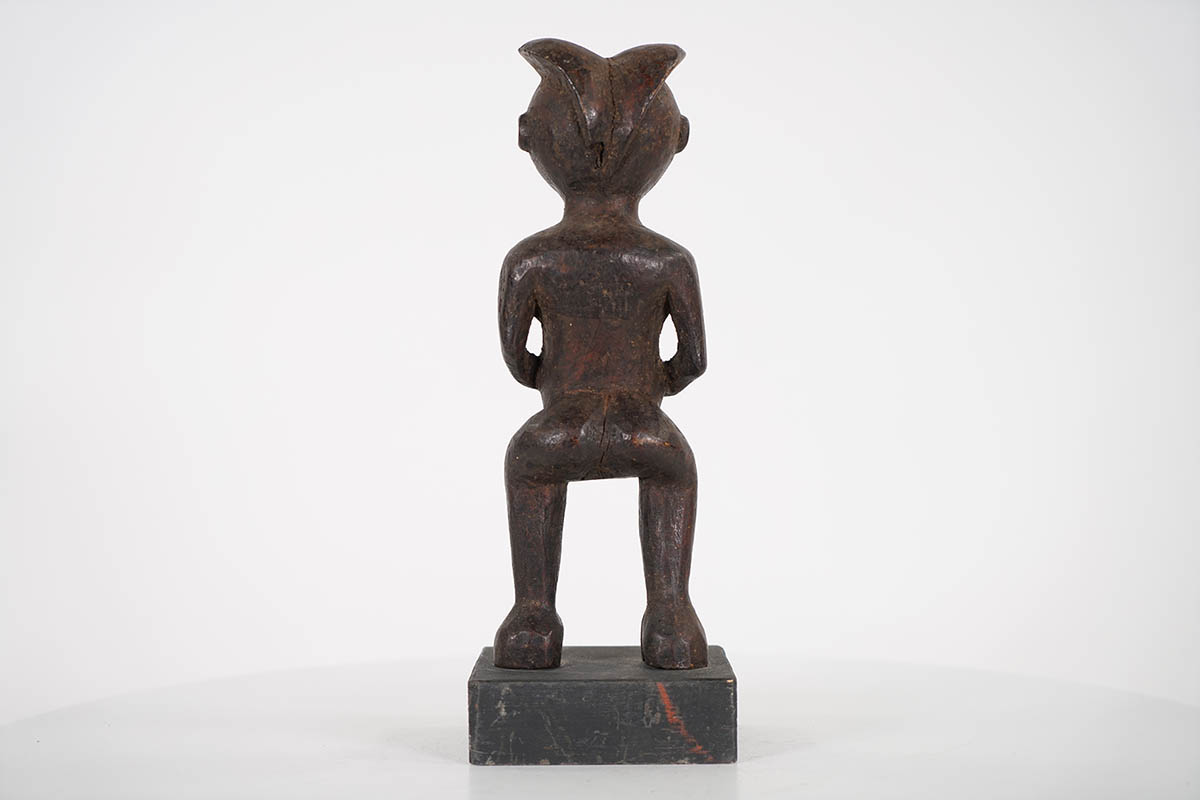This statue was carved in the style of either the Kwere or Luguru peoples of Tanzania. The statue comes attached to a custom base for easy display and measures 11 inches tall, 12.5 inches including stand, and weighs 1.5 pounds. There is some cracking, scuffing and general wear and tear throughout. Please inspect photos carefully.
Female Kwere or Luguru Statue 12.5″ – Tanzania – African Art
Original price was: $200.00.$50.00Current price is: $50.00.
Sold

| Type of Object | Figure, statue |
|---|---|
| Country of Origin | Tanzania |
| Ethnicity | Kwere, Luguru |
| Material | Wood, Pigment |
| Approximate Age | Unknown |
| Height | 11" figure | 12.5" including stand |
| Width | 4" |
| Depth | 2.5" |
| Weight | 1.5 lbs |
| Overall Condition | Some cracking, scuffing and general wear and tear throughout. |
Tribe Information
About the Kwere People
The Kwere people migrated to what is now Tanzania around 1000 A.D. from south of Mozambique. The Kwere do not have centralized political systems, but instead are based on self-governing matrilineal kin groups. Lineage heads are chosen by community leaders. These leaders are responsible for distributing land and maintaining lineage rituals. Leaders are also in charge of settling disputes between family members and are often attributed with having spiritual powers.
Most Kwere believe in mulungu (a supreme god), who was associated with rainfall. Most prayers are directed to familial spirits. Religion among the Kwere is a household affair and every family member is responsible for appeasing its ancentral spirits. Shrines were built to the spirits on the ancestral homeland and members of the family are expected to journey to these sites to make the proper offerings.
Kwere produce various wood sculptures, the best known of which is mwana hiti (small doll-like figurines).
Source: https://africa.uima.uiowa.edu/peoples/show/Kwere
About the Luguru People
“Luguru, also called Ruguru, or Waluguru, a Bantu-speaking people of the hills, Uluguru Mountains, and coastal plains of east-central Tanzania. The Luguru are reluctant to leave the mountain homeland that they have occupied for at least 300 years, despite the relatively serious population pressure in their area and the employment opportunities in the city and on estates. In the late 20th century the Luguru numbered about 1.2 million.
The Luguru observe matrilineal descent and recognize about 50 exogamous, noncorporate clans, which are then divided into some 800 lineages identified with lands, leaders, and insignia (stools, staffs, drums). Historically they rarely had a political organization higher than the lineage level, the exception being when a rainmaker might rise in prominence and demand tribute. Neighbouring peoples also south out Luguru rainmakers. German colonizers imposed a more formal organization, which was continued after World War I. When the British administration chose two “sultans” from among Luguru lineage heads; later subchiefs, headmen, and court officials were named. At independence this system was reorganized, and in 1962 the Tanganyikan government abolished all traditional chiefdoms. The mountain Luguru are now mainly Roman Catholic, while the lowland Luguru are Muslim.
Besides growing crops for their own subsistence, the Luguru export produce to local towns and to Dar es-Salaam. Coffee is grown with some success in the mountains; no cattle are kept because of tsetse fly infestation. Some of the largest sisal estates in Tanzania are in lowlands surrounding Luguru lands, and many non-Luguru have come to work on them. Luguru also sell these people foodstuffs."
Sources:
1. Baquart, Jean-Baptiste. The Tribal Arts of Africa. New York: Thames and Hudson Inc. 1998. Print.
2. The Editors of Encyclopedia Britannica. “Luguru.” Encyclopedia Britannica. Encyclopedia Britannica, Inc., 20 July 1998. Web. 19 Apr. 2017
You must be logged in to post a review.







Reviews
There are no reviews yet.